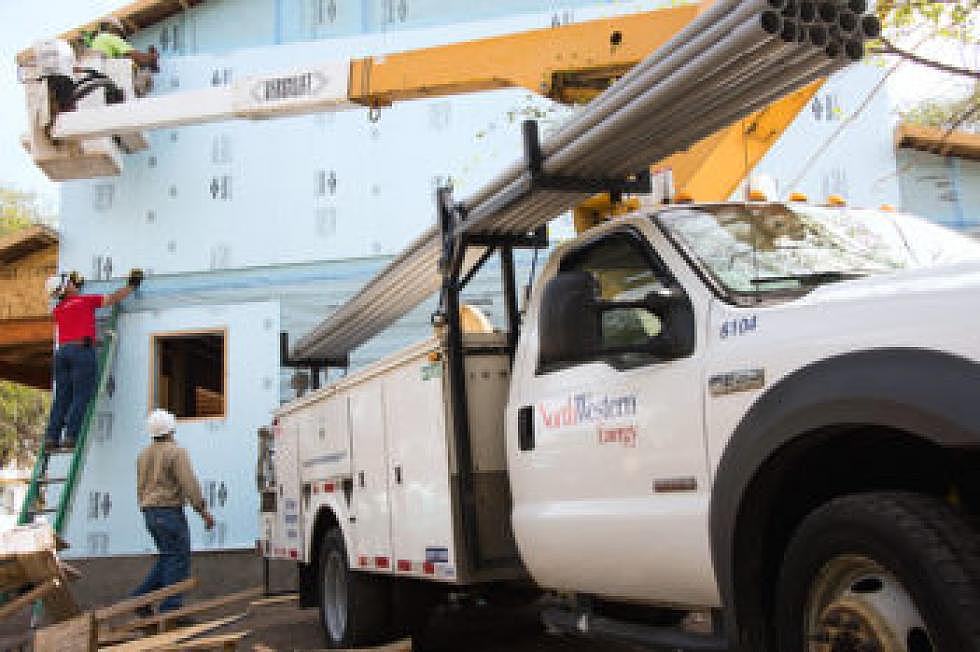
Powering Montana: NorthWestern finds high-tech solutions to help customers
Every month, NorthWestern Energy President and CEO Bob Rowe sends anniversary cards to employees, thanking them for their years of service. He already knew he worked for an exceptional company, but when a 45th anniversary card crossed his desk, that confirmed it.
When employees stick around for more than 40 years, you know your company must be something special.
NorthWestern Energy serves more than 718,000 customers across Montana, South Dakota, Nebraska and Yellowstone National Park in Wyoming, through improving customer service, providing diverse energy solutions and investing in local communities. For more than 100 years, the company has worked to make all their operations safe, reliable and personable.
Improvements in technology and an integral “business tech” team have helped NorthWestern Energy make a smooth transition into an increasingly tech-dependent world.
In 2015, NorthWestern remodeled its local office in Missoula, making it more welcoming and offering additional services to the public. While most utility companies are no longer open to walk-in traffic, Rowe said their local offices allow NorthWestern to respond more effectively to service calls and interact more meaningfully with customers.
Technology played a big role in making this possible.
“Believe it or not, but that was a technology project,” Rowe said. “It’s old school, but really a technology-enabled project.”
With upgraded customer information systems, NorthWestern customer service representatives now have access to real-time consumer data. When someone visits or calls a local office, the employee they talk to can often solve the problem right over the phone. Rowe said the company is also ramping up its social media presence so it can continue to communicate with customers where they choose to be, rather than routing them through a larger centralized call center.
Beyond empowering customer service reps with real-time, detailed data, NorthWestern is gathering more data in the field.
“If you look at one of our employee’s vehicles, gas or electric, there’s a lot of computational power,” Rowe said. “Our field technicians have and need a lot technology skills, and they need access to good support from our business technology team.”
With such a huge service area, NorthWestern has a large communications network and is constantly working to improve it. The August 10, 2015 storm in Missoula was the first real test of NorthWestern’s big communication upgrade, Rowe said. A fierce thunderstorm tore through the Missoula Valley, uprooting trees and power lines and crippling a substation and several key transmission structures.
In the process of fielding calls and servicing damaged infrastructure, Rowe said the company got a good look into the effectiveness of the new system and the ability to organize the response and mobilize resources from around the company, including deploying crews from elsewhere across Montana.
Since that time, the ability to quickly service damaged electrical infrastructure has faced more and more challenging weather events, including a devastating winter storm on Montana’s Hi-Line last October.
Rowe said NorthWestern employees, combined with improved technology, made all the difference.
“Ultimately, it was people in the field doing the work, but that work was aided by all the technology that can be brought to bear,” Rowe said. “The grid control center in Butte, dispatch functions, information in the trucks, and also the way we talk to our customers.”
Rowe said the next phase in NorthWestern’s growth will be to integrate remote outage management systems that will allow the system to “self-repair” certain issues. In the coming years, customers should also expect to start seeing advanced meters on their homes and businesses, which can be read remotely and even advise customers on how they can use energy more efficiently.
In the future, Rowe hopes large-scale technology upgrades and integration will help the company and customers use energy more efficiently, as well as increase communication and quality.
Katy Spence is Staff Writer and Digital Content Specialist for the Montana High Tech Business Alliance. She worked previously with the Missoula Current and Treesource, and she’s just finishing up the Environmental Journalism Master’s Program at the University of Montana.
